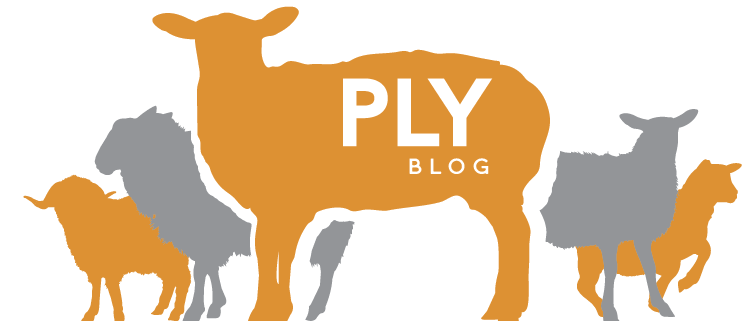References from Spring 2021 issue
Two of the articles in the Spring 2021 issue (Double-coated) contained a number of helpful references.
References from “What Is Primitive? What Is Double-Coated?” by Deborah Robson
Christiansen, Carol Anne. “Primitive Wool and Early Textile Production in Shetland,” diss.,
University of Manchester, 2003.
Dýrmundsson, Ólafur R. “Four–Hornedness: A Rare Peculiarity Still Found in Icelandic Sheep.”
The Icelandic Sheep Breeders of North America Newsletter 9, no. 4 (2005): 6–8.
Dýrmundsson, Ólafur R., and R. Niznikowski. “North European Short-tailed Breeds of Sheep:
A Review.” Animal 4 (2010), 1275–82.
Elwes, Henry John. Guide to the Primitive Breeds of Sheep and Their Crosses on Exhibition at
the Royal Agricultural Society’s Show, Bristol, 1913, with Notes on the Management of Park Sheep in England and the Possible Advantages of Crossing Them with Improved Breeds. (No location cited): Rare Breeds Survival Trust, [1913] 1983.
___. “Notes on the Primitive Breeds of Sheep in Scotland.” The Scottish Naturalist 2 (1912): 25–
32.
Falck, Diane. “Understanding Primitive Fleece.” In Timeless Coloured Sheep, edited by Dawie
du Toit, 92–96. Petersberg, Germany: Michael Imhof Verlag, 2014.
Gleba, Margarita. “From Textiles to Sheep: Investigating Wool Fibre Development in Pre-
Roman Italy Using Scanning Electron Microscopy (Sem).” Journal of Archaeological Science 39, no. 12 (2012): 3643–61.
Noddle, Barbara A., and Michael Lawson Ryder. “Primitive Sheep in the Aran Islands.” Journal
of Archaeological Science 1, no. 1 (1974): 109–12.
Ryder, Michael Lawson. “Fleece Evolution in Domestic Sheep.” Nature 204, no. 495 (1964):
555–59.
___. “Follicle Arrangement in Skin from Wild Sheep, Primitive Domestic Sheep and in
Parchment.” Nature 182, no. 5638 (1958): 781–83.
___. “Seasonal Fleece Changes in Some Cheviot Sheep.” Journal of Agricultural Science,
Cambridge 83 (1974): 93–99.
___. “A Survey of European Primitive Breeds of Sheep.” Annales de génétique et de sélection
animale (Ann. Genet. Sel. anim) 13, no. 4 (1981): 381–418.
___. “Why Do Animals Moult?” New Scientist 13, no. 272 (1962): 266–69.
Wade-Martins, Peter. Black Faces: A History of East Anglian Sheep Breeds. Ashford, Kent,
England: Norfolk Museums Service in association with Geerings of Ashford, 1993.
References from “Wool, Hair, and Kemp” by Deborah Robson
Alderson, Lawrence. http://www.lawrencealderson.com/ (accessed May 4, 2020).
American Sheep Industry Association. Sheep Production Handbook. Englewood, CO: American
Sheep Industry Association, 2015.
ASTM International. Standard Terminology Relating to Textiles, D 123-00b. West
Conshohocken, PA: ASTM International, 2000.
Christiansen, Carol Anne. “Primitive Wool and Early Textile Production in Shetland,” diss.,
University of Manchester, 2003.
Porter, Valerie, Lawrence Alderson, and Stephen J. G. Hall. Mason’s World Encyclopedia of
Livestock Breeds and Breeding, Volumes 1 & 2. Wallingford and Boston: CABI, 2016.
Ryder, Michael L. “Wool of the 14th Century BC from Tell El-Amarna, Egypt.” Nature 240, no.
5380 (1972): 355–56.
Ryder, Michael L., and Stuart Kimbell Stephenson. Wool Growth. London and New York:
Academic Press, 1968.
Scobie, D. R., A. R. Bray, and N. C. Merrick. “Medullation and Average Fibre Diameter Vary
Independently in the Wool of Romney Sheep.” New Zealand Journal of Agricultural Research 41, no. 1 (1998): 101–10.
Scobie, D. R., J. L. Woods, and D. B. Baird. “Seasonal and Between Sheep Differences in
Medullation of Wool Fibres.” Proceedings of the New Zealand Society of Animal Production 53 (1993): 319–22.
Wilson, J. F. “The Medullated Wool Fiber.” Hilgardia: A Journal of Agricultural Science (California
Agricultural Experiment Station) 4, no. 5 (1929): 135–52.
PLY Magazine believes that Black lives matter, as well as LBGTQI+ lives. Those most vulnerable and persecuted in our communities deserve our love and support. Please be good to each other.




Leave a Reply
Want to join the discussion?Feel free to contribute!